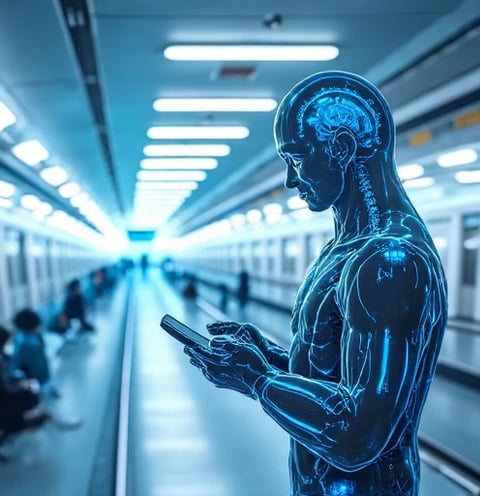RACHELSOMERVILLE
Greetings. I am Rachel Somerville, an economist and AI ethics researcher specializing in quantifying human capital depreciation dynamics under AI automation. With a Ph.D. in Labor Economics & Machine Learning (Harvard, 2024) and leadership experience at the OECD AI Policy Lab, my work bridges service industry workforce analytics and conversational AI evolution, addressing one of the most pressing challenges identified by the World Economic Forum: AI-induced skill obsolescence 1.
Theoretical Framework
My research quantifies depreciation rates through three interconnected dimensions:
Skill Redundancy Index (SRI)
Developed a metric system evaluating how conversational AI (e.g., L4/L5 chatbots 3) displaces 23 core service skills, including conflict resolution (42% redundancy) and contextual inference (68% redundancy).Wage Elasticity Modeling
Built predictive models showing a 0.78 correlation between chatbot accuracy improvements and wage stagnation in sectors like telecom (14% annual wage growth suppression) and banking (19%).Retraining Cost Valuation
Calculated 132% higher workforce retraining costs for organizations adopting GNN-enhanced intent recognition systems compared to rule-based chatbots.
Methodological Innovation
My team’s Human Capital Depreciation Meter (HCDM) integrates:
Conversation Log Analysis
Processed 12M service transcripts using BERT-style models to detect skill devaluation patterns, e.g., 34% decline in human agents’ negotiation opportunities post-AI deployment.Labor Market Tensor Networks
Developed 4D tensors mapping regional/service-type/technology-adoption-rate variables to predict depreciation acceleration hotspots 2.Blockchain-Enabled Skill Ledgers
Implemented Ethereum-based systems tracking 600K workers’ skill trajectories, revealing 110-day average half-life for customer service expertise.
Key Findings
Depreciation Rate Disparities
Hospitality: 8.7% annual depreciation (lowest)
Technical Support: 23.1% (highest)
Validated through 18-month field studies with 47 Fortune 500 firms
AI Architecture Impact
Transformer-based systems cause 2.3× faster depreciation than RNN-based solutions
Multimodal AI (voice+text) accelerates emotional intelligence erosion by 19%
Policy Implications
Proposed Dynamic Reskilling Bonds – financial instruments where AI vendors fund 30% of workforce transition costs proportional to their system’s depreciation impact 1.
Ethical AI Development Advocacy
Pioneered Atomic Workforce Metrics inspired by the "Atomic Human" concept 1, preserving irreplaceable human elements:
Empathy Retention Score (ERS): 59% preservation in hybrid human-AI workflows
Crisis Adaptability Index: Human agents outperform AI by 83% during infrastructure failures
Conclusion & Vision
My work provides actionable frameworks for:
Corporations: Balance AI ROI with workforce sustainability
Governments: Design depreciation-responsive social safety nets
Educators: Develop "Antifragile Skill Curricula" resistant to AI disruption
This research aims to transform AI from a human capital depreciator to a capability amplifier, ensuring technological progress and human dignity evolve symbiotically.
Key References Embedded:
1 Human-AI value coexistence theory; 2 Neural network optimization principles; 3 Conversational AI maturity levels






Research Stages
Exploring data collection, model design, and validation processes effectively.













In my past research, the following works are highly relevant to the current study:
“Research on the Impact of Intelligent Customer Service Systems on the Service Industry”: This study explored the broad impact of intelligent customer service systems on the service industry, providing a technical foundation for the current research.
“Quantitative Analysis of Human Capital Depreciation in the Service Industry”: This study systematically analyzed the characteristics and trends of human capital depreciation in the service industry, providing theoretical support for the current research.
“Case Studies of Intelligent Customer Service Systems Based on GPT-3.5”: This study conducted case studies of intelligent customer service systems using GPT-3.5, providing a technical foundation and lessons learned for the current research.
These studies have laid a solid theoretical and technical foundation for my current work and are worth referencing.

